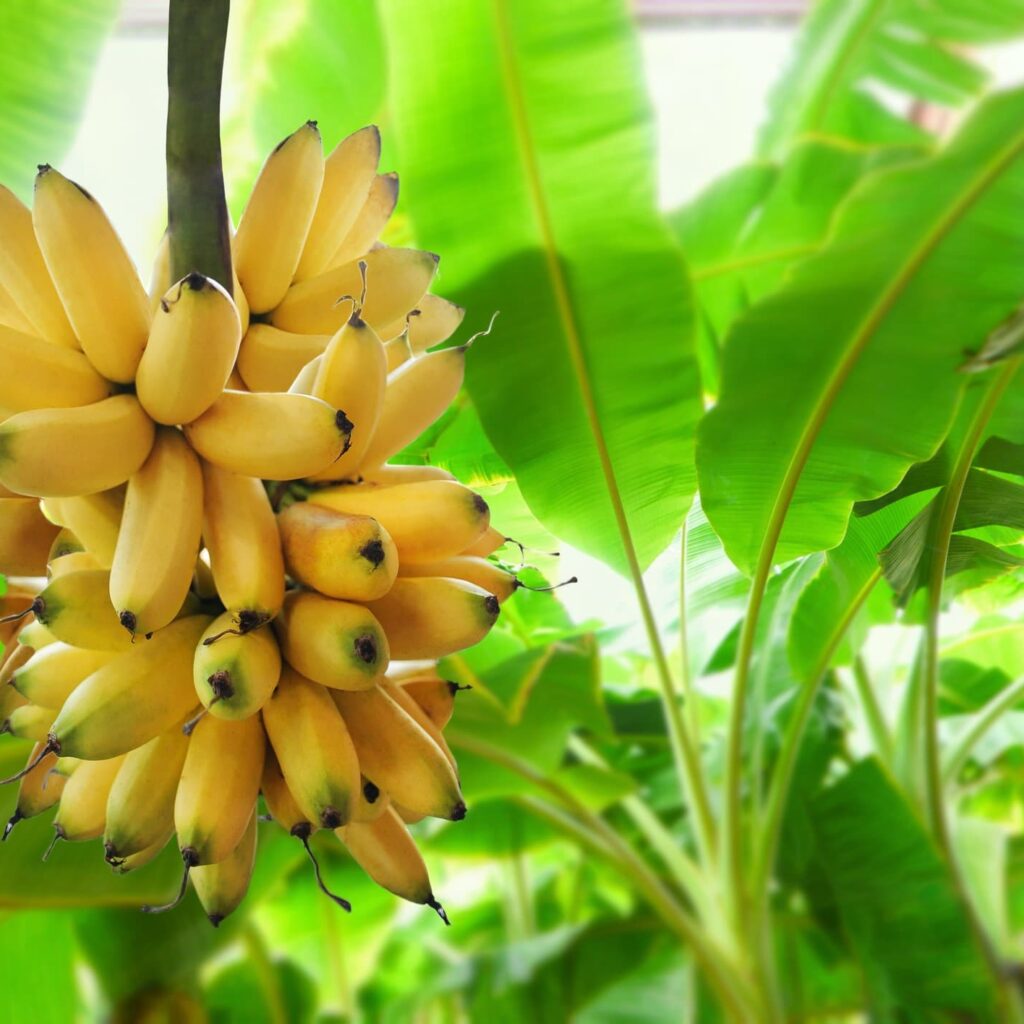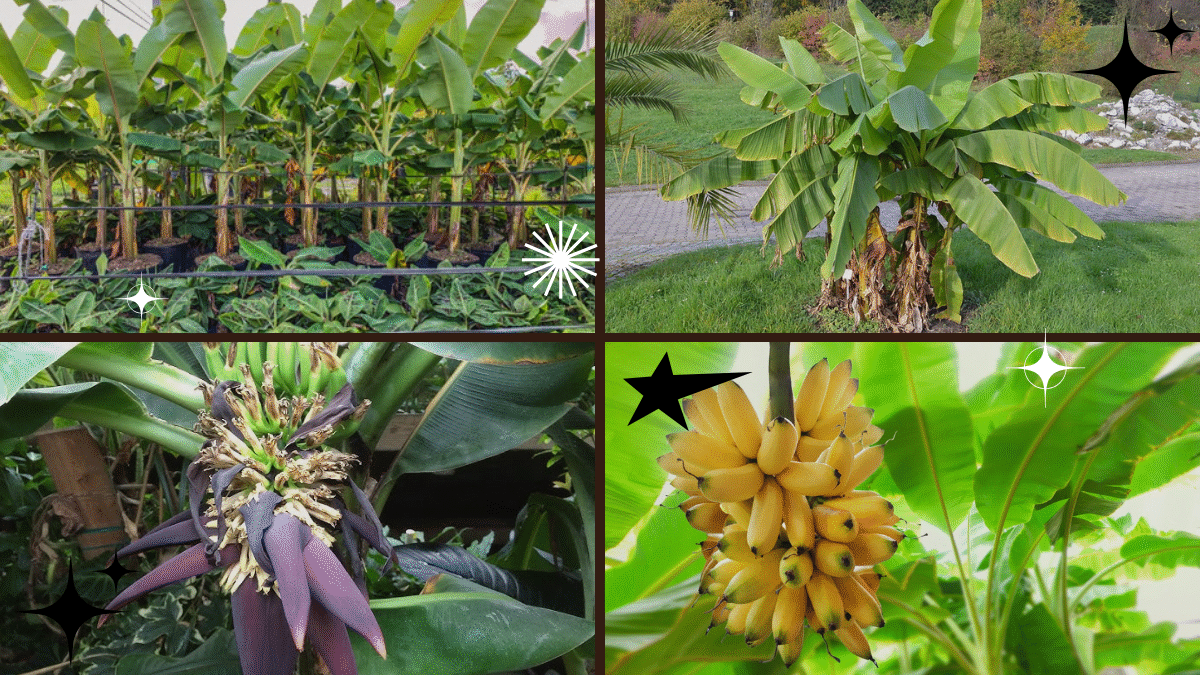There’s something undeniably charming about having a banana plant in your garden or home. Its broad, lush leaves and exotic presence instantly transform any space into a tropical paradise. And the best part? You don’t need to live in a rainforest to grow one successfully. With a little care and attention, you can grow a banana plant right in your backyard, balcony, or sunroom — and maybe even harvest sweet, homegrown bananas!
In this comprehensive guide, we’ll walk you through everything you need to know about how to grow a banana plant, from choosing the right variety to planting, caring for it, and troubleshooting common problems. Let’s dive in and bring a slice of the tropics to your home!

Why Grow a Banana Plant?
Aside from their decorative appeal and delicious fruit, banana plants offer several benefits:
- Fast-growing foliage adds privacy and beauty
- Natural air purifiers indoors or outdoors
- Perfect for tropical-themed gardens and patios
- Homegrown bananas taste fresher and sweeter than store-bought
And while many people think bananas require tropical climates, there are cold-hardy and dwarf varieties perfect for container gardening or temperate zones.

Choosing the Right Banana Plant Variety
There are over 1,000 varieties of bananas worldwide, but not all are suitable for home growing. Here are a few popular choices for gardeners:
For Fruit Production:
- Dwarf Cavendish – Compact, perfect for pots, produces edible bananas
- Grand Nain (the variety often sold in supermarkets)
- Ice Cream Banana – Known for its sweet, vanilla-flavored fruit
Ornamental Varieties (non-edible or decorative use):
- Red Abyssinian (Ensete ventricosum ‘Maurelii’) – Stunning reddish leaves
- Musa ornata – Lovely pink flowers and ornamental mini-fruits
- Basjoo Banana – Cold-hardy down to -10°F, great for temperate regions
Choose a variety based on your climate, space, and whether you’re growing for fruit or aesthetics.

Ideal Growing Conditions for Banana Plants
Banana plants love warmth, sunlight, and humidity. Here’s what they need to thrive:
- Light: Full sun (at least 6–8 hours daily)
- Temperature: 75°F–95°F (24°C–35°C). Protect from frost.
- Humidity: Prefers high humidity, but regular misting works indoors.
- Soil: Rich, well-draining soil with organic matter.
- pH: Slightly acidic to neutral (5.5–7.0)
If you live in cooler climates, opt for dwarf or hardy varieties in large containers that you can move indoors during cold months.

How to Plant a Banana Plant
Planting Outdoors:
- Choose a sheltered, sunny location away from strong winds (banana leaves tear easily).
- Dig a hole twice as wide and deep as the root ball.
- Mix organic compost into the soil to enrich it.
- Place the banana plant in the hole, keeping the base level with the surrounding soil.
- Backfill with soil, gently firming it around the roots.
- Water thoroughly and mulch to retain moisture.
Planting in a Pot:
- Select a large, sturdy container (minimum 18 inches in diameter for dwarf varieties).
- Use well-draining, rich potting mix (add perlite or sand for extra drainage).
- Plant at the same depth as it was in its original pot.
- Water well and place in a sunny, warm spot.
Watering and Feeding Banana Plants
Banana plants are heavy feeders and drinkers.
- Water: Keep the soil consistently moist but not waterlogged. In hot weather, water daily. In cooler months, reduce watering.
- Humidity: Mist leaves regularly or place a tray of water nearby for indoor plants.
- Fertilizer:
- Use a balanced 10-10-10 fertilizer monthly during the growing season.
- Supplement with organic compost or liquid seaweed fertilizer for lush growth.
Tip: Add a thick layer of mulch to help retain moisture and suppress weeds.
Flowering and Fruit Production
Under ideal conditions, banana plants can flower and produce fruit in 9–24 months. The flowering stalk emerges from the center of the plant, followed by clusters of bananas (called “hands”).
Important points:
- Each stalk bears fruit once, then dies back.
- Cut the fruited stalk after harvest to make room for new shoots (called “pups”).
- Bananas take around 60–150 days from flowering to ripen.
Propagating Banana Plants
Bananas propagate through suckers or pups — small shoots that grow at the plant’s base.
How to propagate:
- Wait until pups are at least 12–18 inches tall.
- Gently dig around the base and separate the pup with some attached roots.
- Plant the pup in a prepared pot or spot in the garden.
- Water well and keep shaded until established.
This is a great way to grow more plants or replace old ones.
Common Banana Plant Problems (and How to Fix Them)
Yellow Leaves
Cause: Overwatering, cold temperatures, or nutrient deficiency.
Solution: Check soil moisture, adjust watering, move to a warmer spot, and feed regularly.
Brown Leaf Edges
Cause: Low humidity or dry soil.
Solution: Mist leaves, increase watering, and mulch the soil.
No Flowers or Fruit
Cause: Not enough sun, poor soil, or the plant is too young.
Solution: Ensure full sun, enrich soil with organic compost, and be patient!
Pests:
- Aphids: Spray with soapy water.
- Spider mites: Wipe leaves with a damp cloth.
- Mealybugs: Remove by hand or use neem oil spray.
Overwintering and Cold Protection
Banana plants are sensitive to cold, but hardy varieties like Basjoo can survive winter with care.
For potted plants:
Move indoors before the first frost. Keep in a bright, warm area and reduce watering.
For outdoor plants:
- Cut back the leaves after frost.
- Mulch heavily around the base with straw or leaves.
- Cover with burlap or frost cloth for added protection.
Decorative Uses for Banana Plants
Even if you never harvest fruit, banana plants make striking additions to:
- Patio gardens
- Tropical-themed flower beds
- Indoor plant corners
- Poolside landscaping
- Balcony jungle nooks
Their large, dramatic leaves and architectural form bring instant lushness to any setting.
Final Thoughts
Growing a banana plant is a rewarding experience — whether for its tropical flair, fresh homegrown bananas, or lush green leaves. With a bit of care, the right variety, and ideal growing conditions, you can turn your home or garden into a sunny, tropical oasis.
So why not start your banana-growing adventure today? Pick your plant, prepare your soil, and watch your own little slice of the tropics grow, leaf by leaf!





Leave A Comment